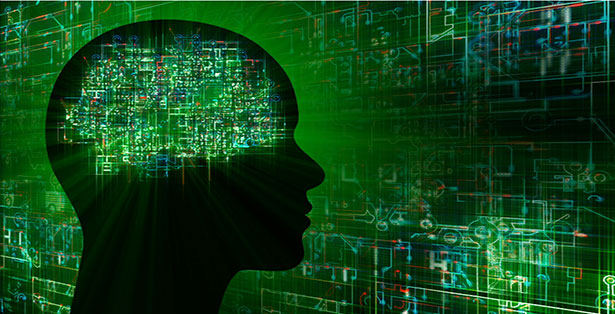The United States Defense Advanced Research Projects Agency, or DARPA, last week announced a new program that aims to build a connection between the human brain and the digital world.
To achieve the goals of the Neural Engineering System Design program, DARPA has invited proposals to design, build, demonstrate, and validate a human-computer interface that can record from more than 1 million neurons and stimulate more than 100 thousand neurons in the brain in real time.
The interface must perform continuous, simultaneous full-duplex interaction with at least 1,000 neurons — initially in regions of the human auditory, visual, and somatosensory cortex.
Devices created for the NESD project might be used to compensate for sight or hearing deficits, DARPA suggested, as well as other possible applications.
DARPA will award up to US$60 million in funding, depending on the quality of proposals received, the successful achievement of milestones, and the availability of funds. Multiple awards are expected.
Innovation Challenge
DARPA is seeking innovative, not incremental, research proposals. A successful NESD device will leverage significant advances in disciplines, including microelectronics, photonics, scalable neural encoding, and processing algorithms.
DARPA would like a single device measuring one cubic centimeter — the size of two nickels stacked — that can perform the read, write, and full-duplex functions desired. It will consider designs that embody those capabilities separately in devices of that size.
The devices must be secure to prevent spoofing, tampering, or denial-of-service attacks. DARPA will help proposers work on security issues.
Ultimately, NESD’s aim is to develop a modular, scalable interface that can serve multiple applications to monitor and modulate large-scale activity in the central nervous system.
Proposed devices must not require external links or connectors for powering or facilitating communications with computers.
Hardware components must be modular. They must have clear, well-defined hardware interconnect and software APIs that easily accommodate upgrades to componentry, as well as new neural signal transduction modalities or algorithms, so they can be used for future R&D.
The NESD program will require scientific and technical advances in two major technical areas: neural transducers and algorithms; and hardware, prototyping, and manufacture.
“The point of this solicitation is to see what proposers think the best solution to design questions such as this are,” said DARPA Senior Policy Advisor Rick Weiss.
The NESD program’s expected to run in three phases over a four-year period.
The Rationale for a Brain-Computer Interface
“The brain is probably the last medical threshold we haven’t been able to cross with medical devices,” noted Venkat Rajan, global director of visionary healthcare at Frost & Sullivan.
“Treating a lot of degenerative disorders — whether related to pain, Parkinson’s disease, mental health, or vision problems — with drugs hasn’t necessarily always worked,” he told TechNewsWorld. “The brain is just a circuit, and if you can interface with it with microelectronics and address issues, that can be a significant improvement in the quality of life.”
Keeping Brain Implants Secure
The research “will be performed initially in closed-loop systems, eliminating [security] concerns,” DARPA’s Weiss told TechNewsWorld. “Any research beyond that will have to demonstrate adequate security provisions and include appropriate audits.”
Still, whether NESD devices can be as secure as DARPA hopes is not certain, as hackers have repeatedly defeated cybersecurity measures.
More Than Tech
“I do have concerns that you come up with a device that’s a complicated chip with a lot of capabilities and don’t address the question of how to train the brain to interface with that,” commented Aron Seitz, a professor of psychology at UC Riverside, who trains disabled people in the proper use of their prosthetics.
It took experts 10 to 20 years to realize that hearing-disabled people who had received cochlear implants didn’t know how to understand the signals, he told TechNewsWorld, and “there’s huge emphasis now on training people how to understand those signals.”























































